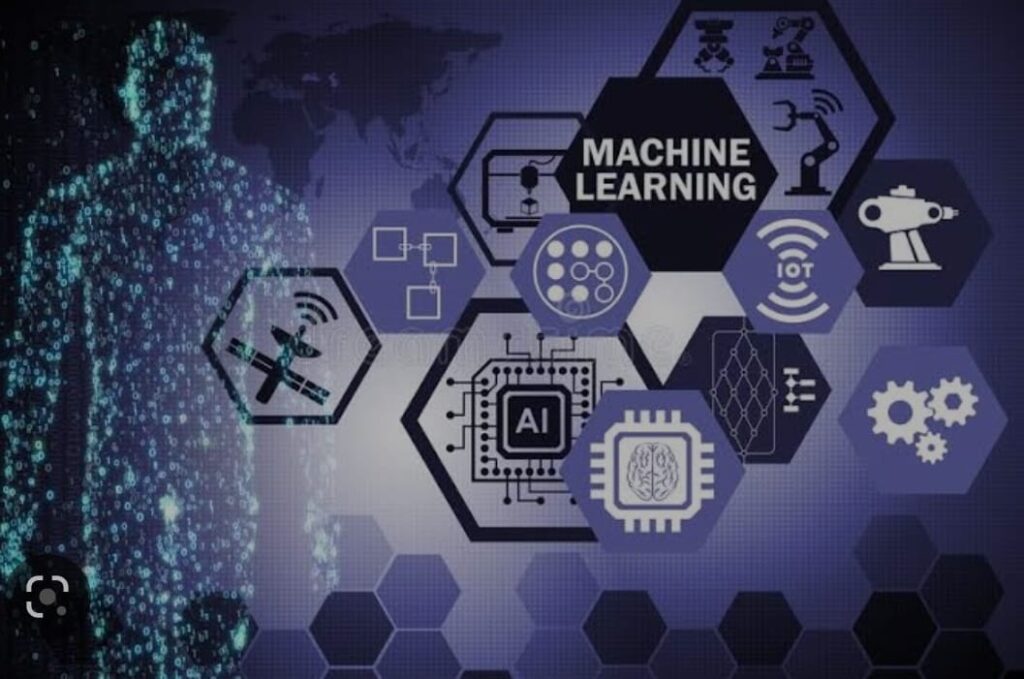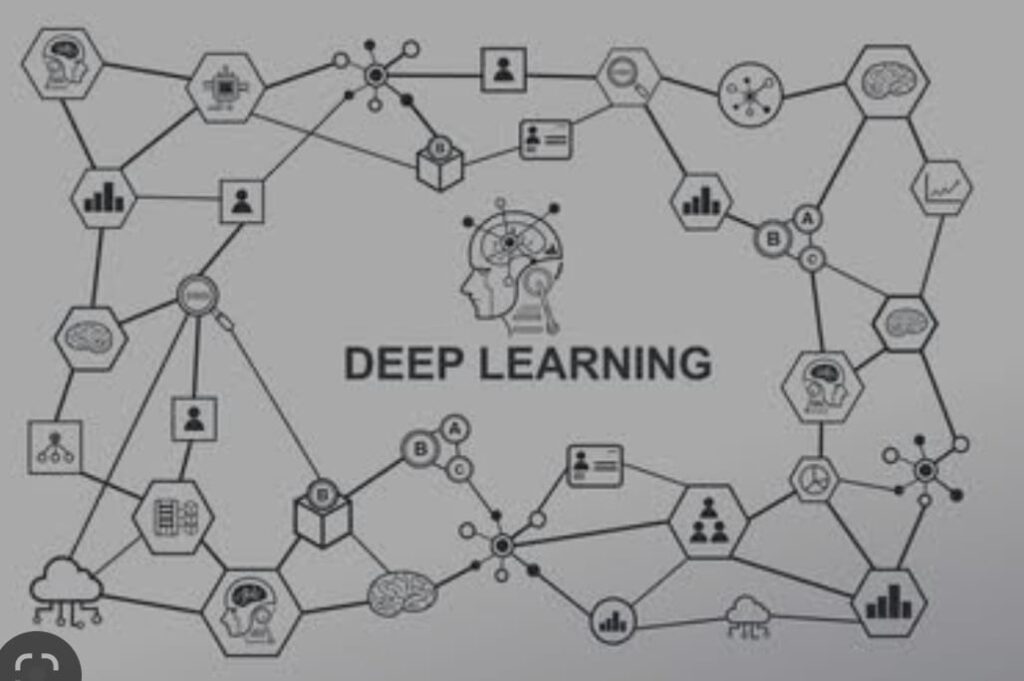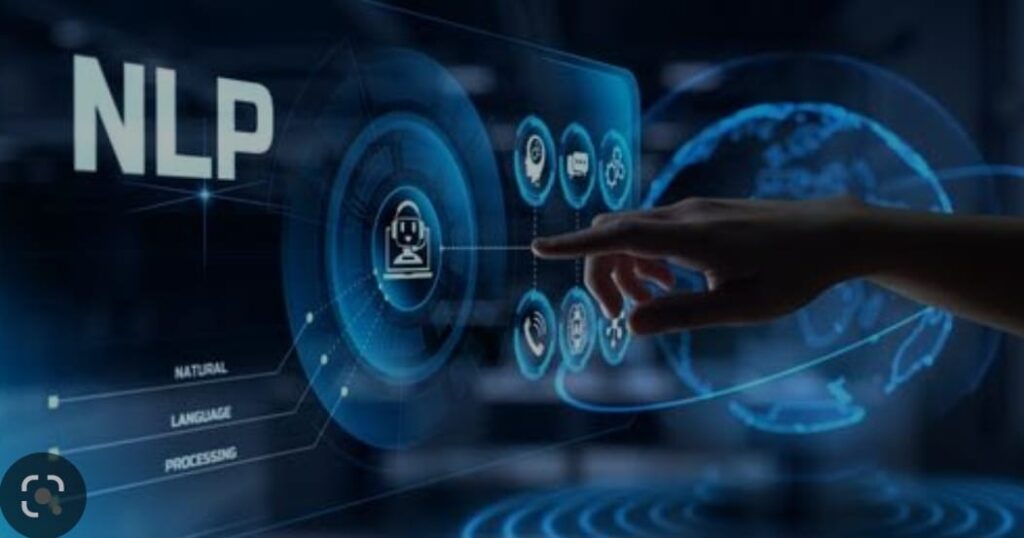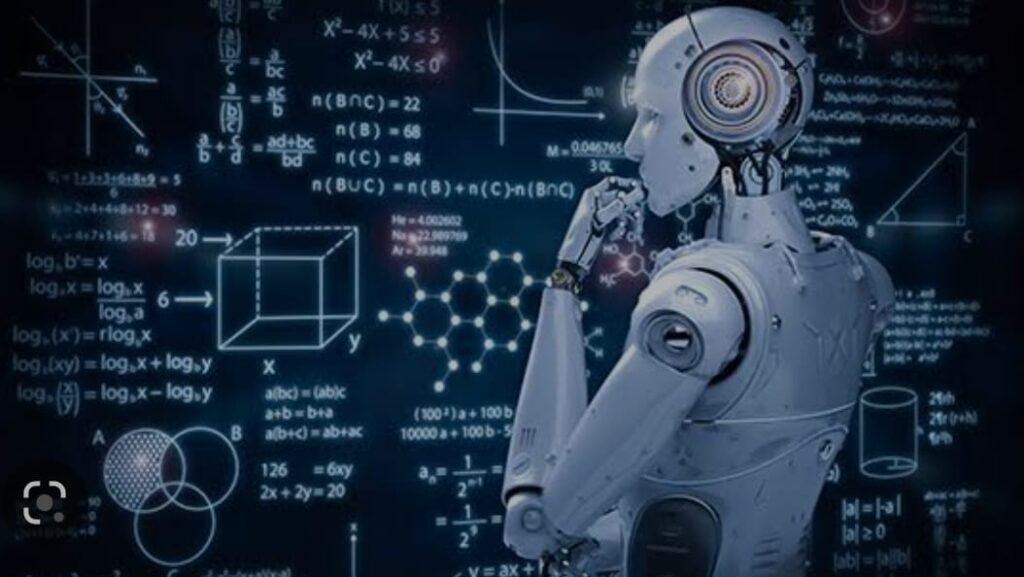Table of Contents
I. Introduction to Artificial intelligence
Definition of Artificial intelligence :-
AI stands for Artificial Intelligence, which refers to the development of computer systems that can perform tasks that typically require human intelligence, such as perception, reasoning, learning, problem-solving, decision-making, and natural language processing.
In other words, AI enables machines to learn from data and experiences, adapt to new situations, and perform tasks autonomously without explicit programming. AI systems can be designed to function in various contexts, including healthcare, finance, transportation, manufacturing, education, and entertainment, among others.

Brief history of AI:-
The concept of AI has been around for centuries, but the development of AI as a scientific discipline and a practical technology began in the 1950s. Here’s a brief history of AI:
In 1943, Warren McCulloch and Walter Pitts proposed a model of artificial neurons, which laid the groundwork for neural networks.In 1950, Alan Turing published a paper on the “Imitation Game,” which proposed a test for machine intelligence, known as the Turing Test.
In the 1950s and 1960s, the field of AI saw significant progress in the areas of logic and rule-based systems, including the development of the first chess-playing program.In the 1970s and 1980s, AI research shifted towards knowledge-based systems, which focused on representing and reasoning about human knowledge.
In the 1990s and 2000s, AI research focused on machine learning, particularly in the areas of decision trees, neural networks, and support vector machines.In the 2010s, AI saw significant breakthroughs in deep learning, which enabled machines to learn from vast amounts of data and achieve human-level performance in tasks such as image recognition and natural language processing.
Today, AI is a rapidly evolving field with a wide range of applications and potential for further development and innovation.
Importance and applications of AI :-
AI has become increasingly important in today’s world due to its ability to automate and optimize various processes, improve decision-making, and provide new insights and capabilities. Here are some of the key applications and importance of AI:
- Automation: AI can automate repetitive and mundane tasks, freeing up human workers to focus on more complex and creative tasks.
- Personalization: AI can analyze vast amounts of data to personalize products, services, and experiences for individual users.
- Efficiency: AI can optimize systems and processes to reduce costs and increase efficiency, such as in manufacturing, logistics, and supply chain management.
- Healthcare: AI can be used in medical diagnosis, drug discovery, and personalized medicine, among other applications.
- Education: AI can help personalize learning, provide personalized feedback to students, and facilitate adaptive learning.
- Finance: AI can be used in fraud detection, credit risk assessment, and algorithmic trading, among other applications.
- Natural language processing: AI can be used to understand and generate natural language, enabling applications such as virtual assistants, chatbots, and language translation.
- Gaming: AI can be used to develop intelligent game agents that can challenge and learn from human players.
Overall, AI has the potential to revolutionize the way we live and work, providing us with more efficient and effective ways of doing things. However, it’s important to consider the ethical and social implications of AI to ensure that it’s used for the greater good.
II. Types of AI
here are mainly three types of AI:
- Narrow or Weak AI: Narrow AI or Weak AI is designed to perform a specific task or set of tasks, such as recognizing faces, playing chess, or driving a car. These systems are trained to perform a particular function within a specific context and cannot generalize to other tasks or contexts.
- General or Strong AI: General AI or Strong AI refers to a hypothetical system that can perform any intellectual task that a human can do. These systems would have the ability to reason, plan, learn, and adapt to new situations, similar to human beings. However, such systems have not yet been developed, and there is still a long way to go before they can become a reality.
- Super AI: Super AI refers to a hypothetical system that would be vastly more intelligent and capable than humans. These systems would have the ability to solve complex problems, invent new technologies, and potentially control and manipulate human beings. However, the development of Super AI raises significant ethical and social concerns, and many experts believe that it should be approached with caution.
Overall, the type of AI that is developed and deployed depends on the specific application and context. Narrow AI is currently the most common type of AI in use, while General AI and Super AI are still in the realm of science fiction.
III. Machine Learning
Introduction to Machine Learning:
Machine learning is a subfield of artificial intelligence (AI) that allows computer systems to learn and improve from experience without being explicitly programmed. The goal of machine learning is to develop algorithms that can automatically learn patterns and insights from data and use this knowledge to make predictions or decisions.

Types of Machine Learning:
There are mainly three types of machine learning:
- Supervised Learning: In supervised learning, the algorithm is trained on labeled data, where the inputs (features) and outputs (labels) are already known. The algorithm learns to generalize from the labeled examples and can make predictions on new, unlabeled data.
- Unsupervised Learning: In unsupervised learning, the algorithm is trained on unlabeled data, where the inputs (features) are given, but the outputs (labels) are unknown. The algorithm learns to find patterns and structures in the data and can be used for tasks such as clustering or dimensionality reduction.
- Reinforcement Learning: In reinforcement learning, the algorithm learns to make decisions based on feedback from the environment. The algorithm receives rewards or penalties based on its actions and learns to optimize its behavior to maximize the reward.
Examples of Machine Learning in Practice:
- Image and Speech Recognition: Machine learning is used to train algorithms for image and speech recognition tasks. For example, facial recognition technology is used in security systems and social media platforms, while speech recognition is used in virtual assistants like Siri and Alexa.
- Recommendation Systems: E-commerce websites and streaming platforms use machine learning to recommend products or content to users based on their past behavior and preferences.
- Fraud Detection: Banks and financial institutions use machine learning to detect fraudulent transactions by analyzing patterns in transaction data.
- Medical Diagnosis: Machine learning is used in medical diagnosis to analyze patient data and identify patterns that can help diagnose diseases or predict outcomes.
- Autonomous Vehicles: Machine learning algorithms are used in autonomous vehicles to analyze sensory data and make real-time decisions about steering, braking, and acceleration.
Overall, machine learning has many practical applications across various industries and has the potential to revolutionize the way we live and work.
IV. Deep Learning
What is Deep Learning?
Deep learning is a subset of machine learning that uses neural networks to learn and make decisions from large amounts of data. It is called “deep” because it involves multiple layers of interconnected nodes that can learn and process information hierarchically.

Neural Networks:
Neural networks are a type of machine learning model that mimics the structure and function of the human brain. They consist of layers of interconnected nodes, or neurons, that can learn and process information by adjusting the weights of their connections based on feedback from the data.
Applications of Deep Learning:
- Computer Vision: Deep learning is used in computer vision applications such as image and video recognition, object detection, and segmentation.
- Natural Language Processing (NLP): Deep learning is used in NLP applications such as language translation, sentiment analysis, and speech recognition.
- Autonomous Systems: Deep learning is used in autonomous systems such as self-driving cars, drones, and robots to help them perceive and interact with the environment.
- Healthcare: Deep learning is used in medical imaging and diagnosis to identify diseases and anomalies in medical images such as X-rays and MRIs.
- Finance: Deep learning is used in finance for fraud detection, credit risk analysis, and algorithmic trading.
- Gaming: Deep learning is used in gaming to create intelligent agents that can learn and adapt to the gameplay.
- Generative Art and Music: Deep learning is used in creative applications such as generative art and music, where neural networks can learn to create novel and unique outputs.
Overall, deep learning has shown remarkable success in a variety of applications and has the potential to transform many industries by enabling computers to learn and make decisions from large and complex datasets.
V. Natural Language Processing (NLP)
What is NLP?
NLP stands for Natural Language Processing, which is a subfield of AI that focuses on enabling machines to understand, interpret, and generate human language. NLP combines techniques from linguistics, computer science, and machine learning to develop algorithms that can process natural language text and speech.

NLP Techniques:
- Tokenization: This involves breaking down a text into smaller units such as words, phrases, or sentences.
- Part-of-speech (POS) Tagging: This involves labeling each word in a text with its corresponding part of speech (noun, verb, adjective, etc.).
- Named Entity Recognition (NER): This involves identifying and categorizing named entities in a text, such as people, places, and organizations.
- Sentiment Analysis: This involves determining the sentiment (positive, negative, or neutral) expressed in a text.
- Topic Modeling: This involves identifying the main topics or themes in a collection of documents.
Applications of NLP:
- Chatbots and Virtual Assistants: NLP is used in chatbots and virtual assistants such as Siri and Alexa to understand user queries and generate appropriate responses.
- Language Translation: NLP is used in language translation tools such as Google Translate to translate text from one language to another.
- Sentiment Analysis: NLP is used in social media monitoring and market research to analyze customer sentiment and feedback.
- Text Summarization: NLP is used in news and content summarization to extract the main points of a text and generate a condensed version.
- Speech Recognition: NLP is used in speech recognition systems such as voice assistants and speech-to-text software.
- Spam Detection: NLP is used in email filters and spam detection systems to identify and filter out spam messages.
- Healthcare: NLP is used in medical documentation and diagnosis to extract relevant information from patient records and assist with clinical decision-making.
Overall, NLP has many practical applications across various industries and has the potential to enable machines to understand and communicate with humans in a more natural and intuitive way.
VI. Robotics
Introduction to Robotics:
Robotics is the field of engineering and science that involves the design, development, and operation of robots. A robot is a machine that can be programmed to perform a variety of tasks autonomously or with human supervision. Robotics combines mechanical engineering, electrical engineering, and computer science to create machines that can interact with the physical world.

Types of Robots:
- Industrial Robots: These are robots used in manufacturing and industrial applications such as assembly, welding, painting, and material handling.
- Service Robots: These are robots designed to assist humans in various tasks such as cleaning, cooking, and healthcare.
- Military Robots: These are robots used in military applications such as reconnaissance, bomb disposal, and combat.
- Educational Robots: These are robots designed to teach and educate students about robotics and engineering concepts.
- Entertainment Robots: These are robots designed for entertainment purposes such as toys, games, and theme park attractions.
Applications of Robotics in AI:
- Automation: Robotics and AI are used together to automate various tasks such as manufacturing, logistics, and transportation.
- Autonomous Systems: Robotics and AI are used to develop autonomous systems such as self-driving cars, drones, and robots that can perceive and interact with the environment.
- Healthcare: Robotics and AI are used in healthcare for surgical robots, rehabilitation robots, and assistive robots for the elderly and disabled.
- Agriculture: Robotics and AI are used in agriculture for autonomous farming equipment, crop monitoring, and precision farming.
- Space Exploration: Robotics and AI are used in space exploration for planetary rovers, space probes, and spacecraft maintenance.
Overall, robotics plays a crucial role in enabling AI to interact with the physical world and perform a wide range of tasks. The integration of robotics and AI has the potential to transform many industries and improve efficiency, safety, and quality of life.
VII. Ethics and Risks of AI
AI Ethics:
AI ethics refers to the set of principles and values that govern the development and use of artificial intelligence technologies. It is concerned with ensuring that AI is developed and used in a way that is responsible, fair, transparent, and beneficial to all. The key ethical issues related to AI include privacy, bias, accountability, transparency, safety, and security.
Risks of AI:
While AI has the potential to revolutionize many aspects of our lives, it also poses significant risks. One of the main risks is the possibility of AI systems being biased or discriminatory, which could result in unfair treatment of certain groups of people. Another risk is the potential for AI to be used for malicious purposes, such as cyber attacks or surveillance.
There is also concern that AI could lead to job displacement and economic inequality, as well as the potential for AI systems to make decisions that are harmful to humans.
AI Regulations and Governance:
Given the risks associated with AI, there is a growing need for regulations and governance to ensure that AI is developed and used in a safe and responsible manner. This includes both technical standards and ethical guidelines for the design, development, and deployment of AI systems.
Governments and international organizations are also exploring ways to regulate AI, including through the development of legal frameworks and regulatory bodies. Some of the key issues that need to be addressed in AI regulations and governance include data privacy, bias and discrimination, transparency and explainability, and accountability and liability.
VIII. Future of AI
Artificial intelligence (AI) is rapidly advancing and is expected to have a significant impact on many aspects of our lives in the coming years.
Some of the key advancements and predictions for AI include:
- Improved Natural Language Processing: AI systems are expected to become increasingly proficient at understanding and processing natural language, making it possible for humans to interact with machines more naturally.
- Increased Personalization: As AI systems become more sophisticated, they will be able to provide increasingly personalized experiences for users, based on their preferences and behaviors.
- Greater Automation: AI is expected to lead to increased automation in many industries, including manufacturing, transportation, and healthcare.
- Autonomous Systems: There is growing interest in the development of autonomous systems, including self-driving cars, drones, and robots, which have the potential to revolutionize many industries.
- Quantum Computing: The development of quantum computing is expected to significantly enhance the capabilities of AI systems, making it possible to solve complex problems much more quickly than is currently possible.
AI’s impact on society and the workforce:
AI is expected to have a significant impact on society and the workforce. On the one hand, AI has the potential to improve many aspects of our lives, including healthcare, transportation, and education. However, there are also concerns that AI could lead to job displacement, economic inequality, and other social problems. It will be important for policymakers and business leaders to address these issues and ensure that the benefits of AI are distributed fairly.
Future possibilities and limitations of AI:
While AI has the potential to bring about many positive changes, there are also limitations to what AI can do. For example, current AI systems are not capable of true understanding or creativity, and there are still many tasks that are beyond the capabilities of even the most advanced AI systems. Additionally, there are ethical concerns related to the development and use of AI, including issues related to bias, transparency, and accountability. As AI continues to advance, it will be important to address these limitations and ethical concerns to ensure that AI is developed and used in a responsible and beneficial manner.
IX. Conclusion
Recap of key points:
- AI ethics is concerned with ensuring that AI is developed and used in a way that is responsible, fair, transparent, and beneficial to all.
- The risks of AI include bias, discrimination, safety, security, economic inequality, and job displacement.
- AI regulations and governance are needed to ensure that AI is developed and used in a safe and responsible manner.
- The future of AI is likely to involve improvements in natural language processing, increased personalization, greater automation, the development of autonomous systems, and the enhancement of AI capabilities through quantum computing.
- AI’s impact on society and the workforce could be positive, but it will be important to address potential issues related to job displacement and economic inequality.
- The future possibilities of AI are vast, but there are also limitations to what AI can do, and ethical concerns related to its development and use must be addressed.
Final thoughts on AI:
AI has the potential to bring about many positive changes, but it also poses significant risks and challenges. As AI continues to advance, it will be important to address these risks and challenges through the development of ethical guidelines, regulations, and governance structures.
It will also be important to ensure that the benefits of AI are distributed fairly, and that AI is used to enhance, rather than replace, human capabilities. Overall, the future of AI is likely to be shaped by a complex interplay of technological advancements, societal factors, and ethical considerations, and it will require a collaborative effort from stakeholders across various sectors to ensure that AI is developed and used in a way that benefits humanity as a whole.
“Quote”
“Artificial intelligence will reach human levels by around 2029. Follow that out further to, say, 2045, we will have multiplied the intelligence, the human biological machine intelligence of our civilization a billion-fold.” – Ray Kurzweil
Ray Kurzweil is a futurist, inventor, and author known for his work in the fields of artificial intelligence and futurism. This quote reflects his belief that machine intelligence will eventually surpass human intelligence, and that this development will have profound implications for society.
sources & references
to know about information technology and its division please click on link https://amateurs.co.in/2023/03/23/the-power-of-information-technology/

[…] https://amateurs.co.in/2023/03/24/the-rise-of-artificial-intelligence/ […]
[…] Unleashing the Power of Artificial Intelligence: Enhancing Society with its Positive Impact and Bene… “The Ultimate Guide to Machine Learning: Everything You Need to Know” “From AI to Cybersecurity: The Unstoppable Evolution of Information Technology” […]
[…] -“Discovering the Advantages and Potential of IoT Technology: An In-Depth Exploration Unleashing the Power of Artificial Intelligence: Enhancing Society with its Positive Impact and Bene… “The Ultimate Guide to Machine Learning: Everything You Need to Know” “From […]
[…] that are currently not possible. To know about AI and IoT please click on the following links https://amateurs.co.in/the-rise-of-artificial-intelligence/ , […]
[…] Artificial Intelligence (AI) models like ChatGPT have become increasingly popular in recent years, thanks to their ability to perform complex tasks and processes. However, what many people may not realize is that these models indirectly consume water through the data centers where they are hosted. In this article, we will explore the water usage of AI models like ChatGPT and examine the impact of this usage on the environment. We will also discuss strategies for reducing water consumption in data centers, and what this means for the future of AI technology. To know about Artificial Intelligence please follow the link https://amateurs.co.in/the-rise-of-artificial-intelligence/ […]
[…] https://amateurs.co.in/the-rise-of-artificial-intelligence/ […]
[…] https://amateurs.co.in/the-rise-of-artificial-intelligence/ […]
[…] To know in detail about AI please follow the link https://amateurs.co.in/the-rise-of-artificial-intelligence/ […]
[…] https://amateurs.co.in/the-rise-of-artificial-intelligence/ […]
[…] https://amateurs.co.in/the-rise-of-artificial-intelligence/ […]